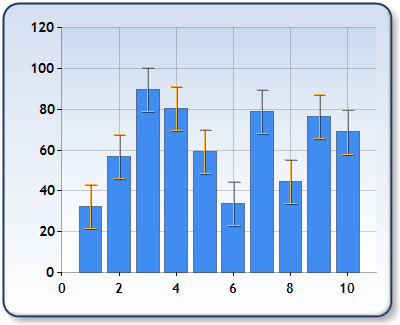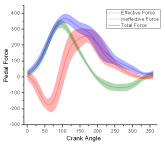

#Error bars not at top of graph r code#
The following code works if your data is in the format of one column containing variables/categories (“Name”), and the remaining columns as numeric values corresponding to sample replicates. Okay so here is a workflow if you’ve decided to import raw data without averages and variability already calculated. Labs(x = "Gene", y = "Relative Abundance (%)", fill = "Species") + Legend.title = element_text(size = 12, face = "bold")) + = element_blank(), = element_line(colour = "grey80"), Panel.border = element_rect(size = 1, fill = NA, colour = "black"), Legend.text = element_text(size = 10, face= "bold"), panel.background = element_blank(), Geom_errorbar(colour = "black", stat = "identity", position = position_dodge(0.65), width = 0.4) + Geom_bar(colour = "black", stat = "identity", position = "dodge", width = 0.65) + Xx = ggplot(df2, aes(x = Name, y = Avg, ymin = Avg-Stdev, ymax = Avg+Stdev, fill = Species)) + Otherwise, they all get annoyingly plotted on top of each other. Within the geom_bar layer, the “width” parameter makes the bars skinnier, and the “position” parameter in geom_errorbar helps to align the errorbars with their respective bar. However, it now includes extra information for including a legend and for defining fill colours.

This code is basically the same as the code for one variable. Try running each line of code on its own (before the pipe, %>%) to determine what is occurring at each step. This is why it is helpful to name your original columns with prefixes or suffixes that can be easily separated. The command separate separates the names of your original columns based on a separator character, in this case an underscore. You will need to change “Name” to whatever you’ve named your category column. This code rearranges your data so that you end up with a column for your initial categories (in my case genes), a column for variable (in my case species), a column for your average, and a column for standard deviation. Here ymax and ymin refer to the top and bottom of the error bars, and in order to calculate these values, you need to add and subtract your standard deviation from your average. In order to include error bars with ggplot2 plots, you need to add the layer geom_errorbar and specify the ymin and ymax in your aesthethics, either for the plot, or within geom_errorbar. Labs(x = "Gene", y = "Relative Abundance (%)") +

= element_blank(), = element_line(colour = "grey80")) + Panel.background = element_blank(), panel.border = element_rect(size = 1, fill = NA, colour = "black"), Theme( = element_text(size = 9.5, face = "bold", angle = 90,hjust = 1, vjust = 0.5),Īxis.title = element_text(size = 12, face = "bold"), = element_text(size = 10, face = "bold"), Geom_errorbar(colour = "black", stat = "identity", width = 0.4) + Xx = ggplot(df, aes(x = Name, y = Avg, ymin = Avg-Stdev, ymax = Avg+Stdev)) + In the code below, you will need to change “Name” to whatever you’ve named your category column. Here the data is already in the correct format so we can plot it right away with ggplot2. In the first example, I’m going to use simple data where I only have one variable. Here is an example of the layout for your data with variables/categories as rows, and averages and standard deviation (calculated already in excel), as columns. I’ll start with method 1 which assumes you have already calculated averages and variability for your samples. Calculate your averages and variability based on your data in RĪverages and variability already calculated.Come with your averages and variability already calculated and included in your data frame.There are two general ways to approach error bars in R: Incorporating error bars into plots (like bar plots) in R is actually not as straightforward as you might expect, so I’ve put together this tutorial based on my trials and tribulations with this process. This variability can be representative of natural variations, uncertainty, or error, and can be caluculated from a number of measures for variation including standard deviation, standard error, range, and confidence intervals. Error bars show the range of variability associated with a value around the mean of that value.


 0 kommentar(er)
0 kommentar(er)
